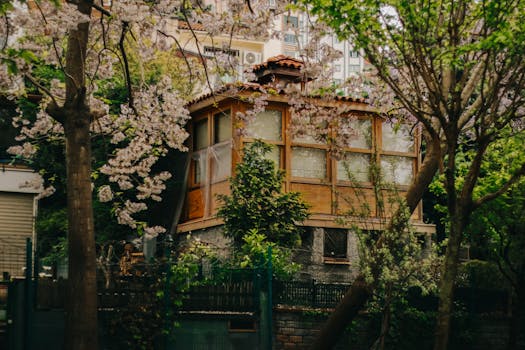
Urban Green Spaces: The Future of Outdoor Living in European Cities by 2025
Urban Green Spaces: The Future of Outdoor Living in European Cities by 2025 is a topic of great interest as cities continue to grow and urbanize. As the world becomes increasingly urbanized, the importance of incorporating green spaces into city planning cannot be overstated. These areas not only provide aesthetic appeal but also serve as crucial components of urban ecosystems, offering numerous benefits for both the environment and human well-being.
Introduction to Urban Green Spaces
Urban green spaces refer to any area within a city that is covered in vegetation, such as parks, gardens, green roofs, and even urban wetlands. These spaces are vital for maintaining ecological balance, mitigating the urban heat island effect, and providing habitats for urban wildlife. Beyond their environmental benefits, urban green spaces also play a significant role in promoting physical and mental health among urban residents by offering areas for recreation, social interaction, and relaxation.
The Role of Urban Green Spaces in Sustainability
As European cities aim to become more sustainable, urban green spaces are at the forefront of this movement. By incorporating more green areas, cities can significantly reduce their carbon footprint. Green spaces absorb carbon dioxide, produce oxygen, and help filter out pollutants from the air, thereby improving air quality. Additionally, they can help manage urban runoff, reducing the risk of flooding and the burden on urban drainage systems.
Challenges and Opportunities
Despite the numerous benefits of urban green spaces, there are challenges to their creation and maintenance. One of the main obstacles is the availability of space in densely populated cities. However, innovative solutions such as green roofs, vertical gardens, and community-led initiatives are making it possible to integrate green spaces into even the most urban of environments. Moreover, the engagement of local communities in the planning and upkeep of these spaces can foster a sense of ownership and cooperation, contributing to their long-term success and sustainability.
Looking to the Future
By 2025, it is anticipated that urban green spaces will become an integral part of European city planning, with a focus on sustainability, community engagement, and innovative design. Technologies such as urban forestry, smart gardens, and green infrastructure will play key roles in enhancing the functionality and impact of these spaces. Furthermore, the incorporation of urban agriculture and community gardens will not only provide fresh produce to local residents but also serve as educational hubs for sustainable living practices.
Conclusion
In conclusion, urban green spaces are the future of outdoor living in European cities by 2025. They offer a multifaceted approach to addressing the challenges of urbanization while enhancing the quality of life for city dwellers. As we move forward, it is crucial that policymakers, urban planners, and the community work together to prioritize the development and preservation of these vital areas, ensuring that future cities are not only sustainable but also livable and vibrant.






